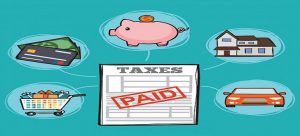Prologue:
Local transportation is the backbone for the quality of life of the citizens residing in that city. Presently, 85% of the residents in Tier 2 cities in India rely on public transportation for commute and logistics. Some cities have metro and local train network to support the commute of the local transportation
Under maintained and safe public vehicles, inadequate capacity of public transportation, road safety, poor traffic management, theft of private vehicles makes life worse for the citizens of the city. Most of the cities also lack integrated transportation plans leading to a huge demand and supply gap creating potential losses for the logistics industry.
Technology acts as a catalyst: Tech plays the role of a catalyst in the proper transportation management by feeding data into the system for proper maintenance of the transportation system. By making the arrival-departure/ route information and live tracking of the vehicles transparent, it can make the commute easier for the residents in that city as well as it would help save money for the logistics company by forecasting any kind of future delays in their future consignment
Businesses embracing technology and acting as a pillar for a smart city
- Bicycle sharing system
• Dynamic Carpooling/ Cab Services
• GPS based tracking for public vehicle
• IoT based two-wheelers
Bicycle sharing system: A bicycle-sharing system is a service where the bicycles are made available for use for the common public on a very short term basis. It enhances the micro-mobility of transportation and the logistics sector. For most of the bicycle sharing apps, they show how many vehicles are available at a specific location, they can even track the cycles via their GPS trackers and the apps allow the user to start and end the trip that helps in increasing convenience for users.
Dynamic Car-Pooling/ Cab Services: Dynamic car-pooling is one of the pillars for smart and sustainable development of smart city infrastructure. It allows the car owner to lease out the seats unused while traveling from home to office or otherwise. The application helps find out riders travelling in that area, with the help of GPS and pre-existing algorithm to find a match for the riders.
GPS based tracking for public vehicle: Public vehicles act as a backbone for transportation and logistics in the majority of the city, but the public transport face problem for overcrowding, that leads to safety concerns and delays for the commuters. GPS based tracking for public vehicle enables the commuter to get details of the bus traveling in that route, and that in turn can reverse the traffic back to the authorities to have an insight about what time it is feasible and profitable to launch an extra bus to generate higher revenue that would help both commuters as well as the transport service providers.
IoT Based Two-wheelers: Connected vehicles that can be unlocked via a One time Password that the user receives on their register phone is one of the major pillars for building smart infrastructure. IoT based two-wheelers are serving as the backbone for the two-wheeler industry. This enables the rider to locate bikes that are in their vicinity, enter and start the ride with an OTP and end the ride and leave the vehicle wherever they want.





